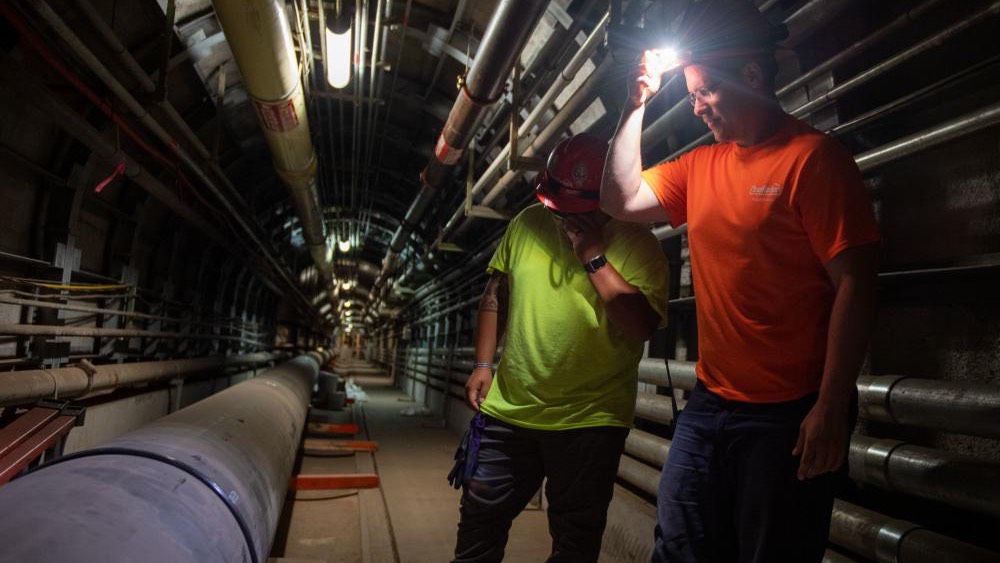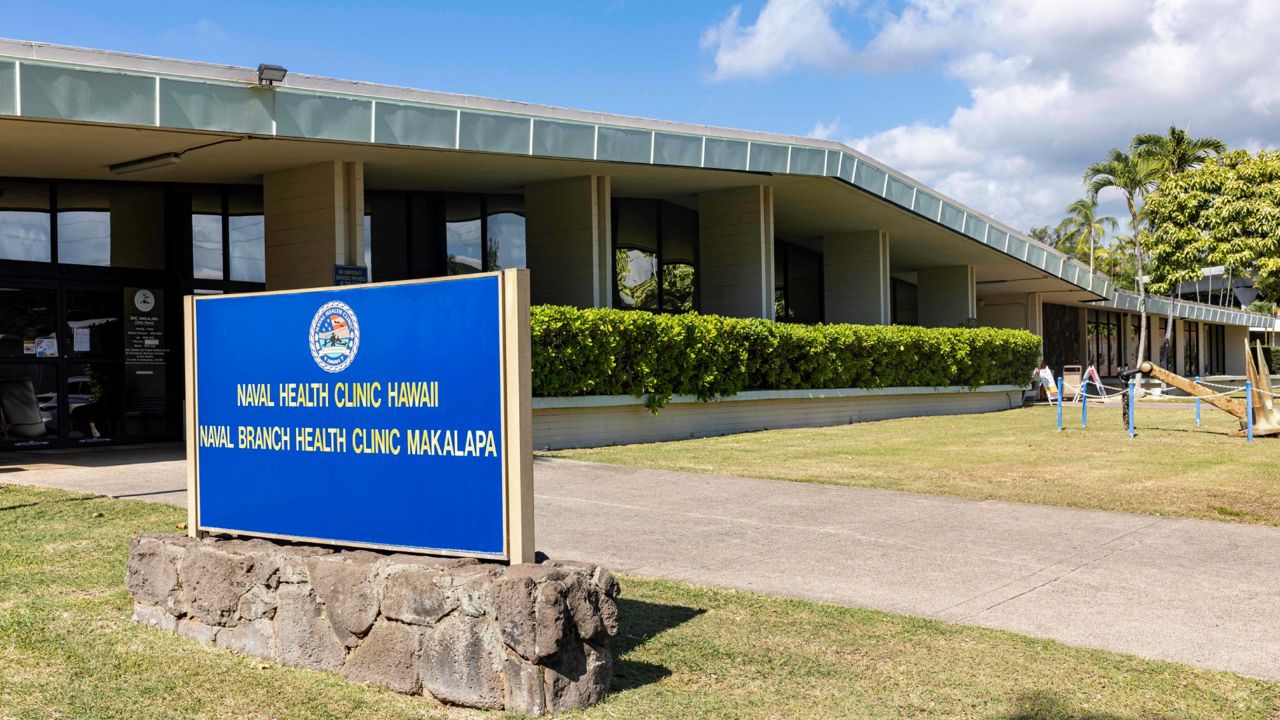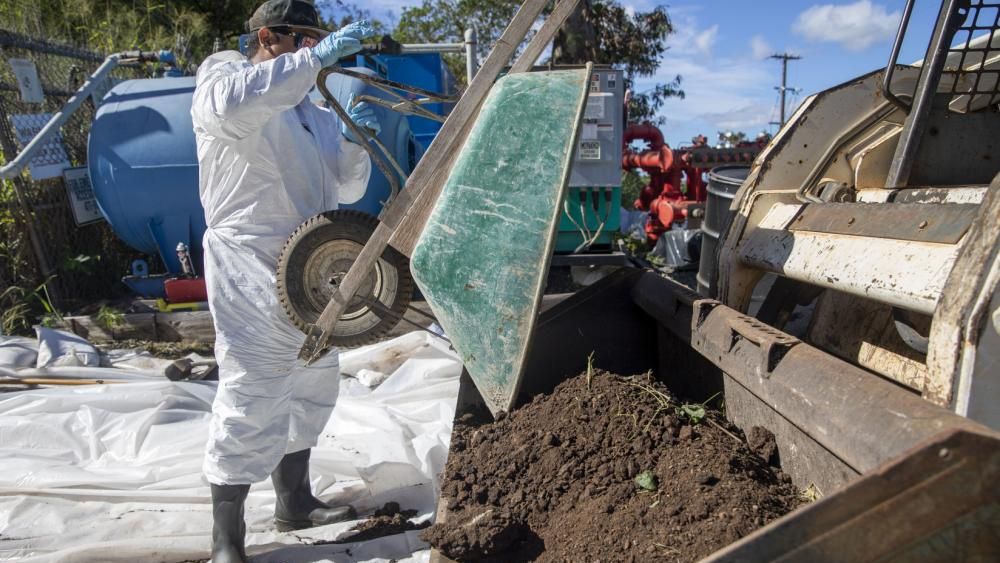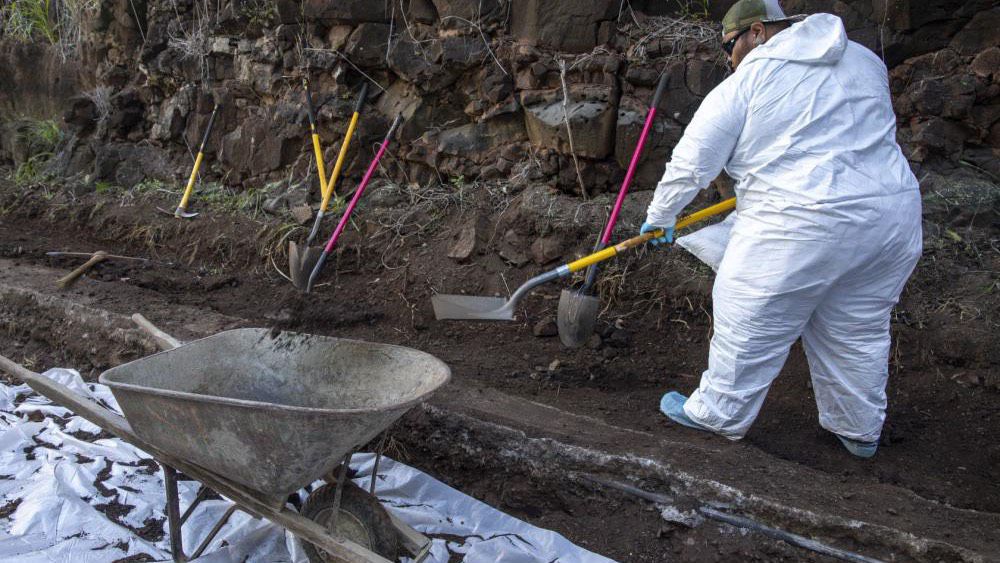JOINT BASE PEARL HARBOR-HICKAM, Hawaii — The water crisis at Red Hill is ongoing as families continue to deal with their distrust of the military water supply and various medical conditions. On Monday, a day after the first anniversary of the fuel leaks at the Red Hill Bulk Fuel Storage Facility, the military held a media conference with updates on the crisis.
The military said they continue to be committed to defueling Red Hill, are opening lines of communication with the public, have a timeline for closing the Red Hill facility, and are launching a dedicated clinic for military families.
“This last year has been extremely difficult for our military families and the people of Hawaii,” said Rear Admiral John Wade, Commander of the Red Hill Joint Task Force, in his opening statement at Monday's media conference. “I acknowledge their anger, frustration, disappointment and mistrust. I hear them loud and clear.”
Wade said he and his team are “committed to get this right,” and recognized two components to the process. The technical aspect of removing the fuel and the other of “actively listening” and conversing with military families and the community. He said various conversations have informed him that “we can do better … We will take this feedback to heart.”
Rear Admiral Stephen Barnett, Commander of Navy Region Hawaii, acknowledged that not only did the fuel contamination damage the water supply, it also damaged the trust between the people of Hawaii and the military. He said they have since been working closely with the Hawaii Department of Health and the Environmental Protection Agency, and restored “safe drinking water” to military families, housing residents and others who rely on the Navy’s water distribution system.
“Since certification from the Department of Health, the water has been safe,” said Barnett. “With our aggressive program of long-term monitoring, we’re ensuring the water will remain safe. Of the 3,000-plus samples of water taken to date, none (of them are) showing the detection of fuel contamination. This is only one step.”
Hawaii U.S. Sen. Mazie Hirono sent a letter earlier this month to the Department of Defense asking how affected families could be assured of the validity and accuracy of the water samples used to clear military housing near Pearl Harbor for a safe return.
Barnett also touched on the repurposing of Red Hill, which the Navy hopes to do after defueling the facility. “I want to assure you that any potential repurpose of Red Hill will not include anything related to the storage of fuel or hazmat. This is our commitment to you.”
Honolulu Board of Water Supply Chief Engineer Ernie Lau said earlier this month at a Red Hill Fuel Tank Advisory Committee meeting that he is concerned that the Red Hill fuel tanks will be used for fuel again in the future, and that he would prefer the tanks be filled with an inert material.
Barnett said in December a third-party report will go before the DOH detailing four alternative uses, which will include the option to repurpose the tanks for a non-fuel use and to fill the tanks with an inert material. He said that the closure will include public involvement to identify potential repurpose opportunities and the DOH will have final approval of any reuse decision.
In response to a later question from attending media, Wade added that they’ve obtained a grant that will provide the opportunity for the public to share their ideas and recommendations on ways to repurpose the facility.
“I’d like to say one more time that the Navy is here for the long run,” added Barnett. “We will make this right. We seek to prove that we are trusted partners in the community. And we’re also good stewards of this precious island. We will remain committed to doing what is right for all those that are involved.”
Dr. Jennifer Espiritu, a Centers of Disease Control-trained medical epidemiologist working for the Defense Health Agency Region Indo-Pacific, said her own children attend a school affected by the fuel-tainted water, so she has first-hand experience with the situation many families have been facing.
“We’re establishing the Red Hill Clinic, which is a safe place for our dedicated care teams who work with our patients to document what is happening to them, and together determine what the best path forward is for them and their family’s health care,” stated Espiritu.
She said health care clinicians from the Army, Air Force and Navy will staff the clinic, which will be dedicated to people exposed to contaminated water. Espiritu didn’t have information on the clinic’s location or hours of operation.
When asked to clarify about the lack of medical literature regarding long-term effects of exposure to fuel-tainted water and the voices of many who say they are experiencing symptoms because of it, Espiritu said, “There are very few limited studies on the long-term effects of JP-5 (jet-propellant-5) fuel exposure. So that’s why the Red Hill Clinic that I spoke about earlier, will be working with experts at the Department of Health, the CDC, the rest of DoD … to monitor these symptoms, so we can create a more robust body of knowledge.”
Some conditions people have been experiencing include skin problems, gastrointestinal problems, respiratory and neurological conditions.
“People are absolutely having health care problems, that I believe. And people deserve to be seen, that, I believe with all my heart. Whether the two are connected? I can’t — we can’t — make that leap now. But what we want to happen is for people to come in so we can see them, find out what’s happening to them, and work them up thoroughly. So if there is a connection, we can pursue it,” Espiritu said.
She later added, “We’re in brand-new territory. This is an unprecedented exposure with an unprecedented number of people complaining of long-term effects. I would like those military beneficiaries to come to our (clinic) so we can document what’s happening to you, and provide a good way forward for what’s best for your family.”
In response to a question from Spectrum News about the Navy acknowledging the emergency situation and that the water supply is still under threat, Wade responded, “Yes, the water is still under threat as long as the fuel is above the aquifer.”
Regarding an emergency situation, Wade said, “the Department of Health issued the state emergency order that was first issued in December of ’21, and then again, updated in May of ‘22. The Department of Defense acknowledges the State Emergency Order and we’re currently applying it. The Secretary of Defense, in March, and repeated when he was here in September, has said that the defueling and the closure of the Red Hill facility is the right thing to do. The establishment of the Joint Task Force, and my mission, is clear. And he has told me and directed me to safely and expeditiously defuel the Red Hill complex. And that’s what my team and I have committed to do.”
Activists with the Sierra Club of Hawaii, Oahu Water Protectors, Shut Down Red Hill Mutual Aid and others gathered over the weekend for the one-year anniversary of the fuel leaks. Wayne Tanaka, the Sierra Club of Hawaii executive director, said in a news release that they are concerned that Oahu’s water supply is still under threat since the Navy has not yet removed the fuel from Red Hill and that the timeline to remove the fuel is too long.
The current plan by the Joint Task Force to defuel Red Hill by June 2024 has yet to be approved by the EPA and DOH. Wade said they’ve been going back and forth with both agencies in responding to questions.
“My commitment is that I and my team will work in partnership with these regulators to try to shorten the timeline,” said Wade. “I’m on record by saying that every day that the fuel sits above the aquifer is a risk to the people of Hawaii, our community and the environment.” He said working within federal and state law, they will look at ways to speed up the process either through applying new technology, doing things in parallel, and possibly working with the DoD, U.S. Indo Pacific Command, the Defense Logistics Agency, incorporating the services on the island to “properly sequence the defueling.”
Since initially submitting the defueling plan in June, Wade said they’ve reduced the timeline to defuel Red Hill to four months from the original eight-month estimation. The defueling will start after repairs and modifications are made to the facility to ensure no further leaks occur during the process.
Sarah Yamanaka covers events, environmental and community news for Spectrum News Hawaii. Michelle Broder Van Dyke covers the Hawaiian Islands for Spectrum News Hawaii.









